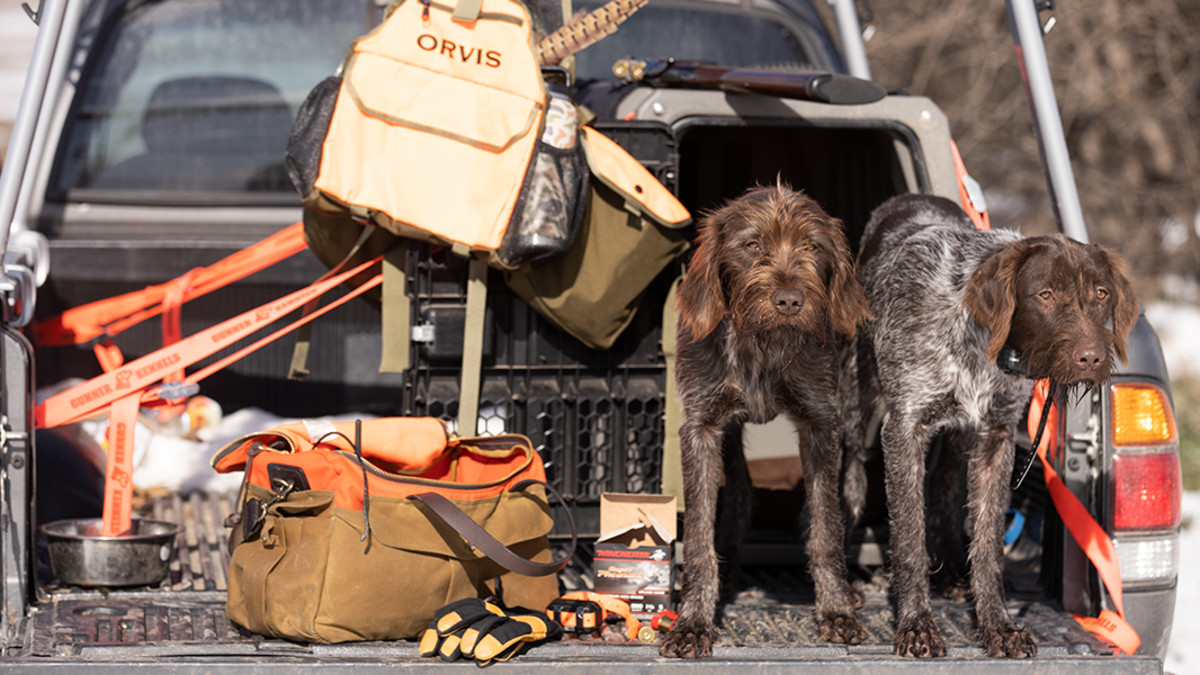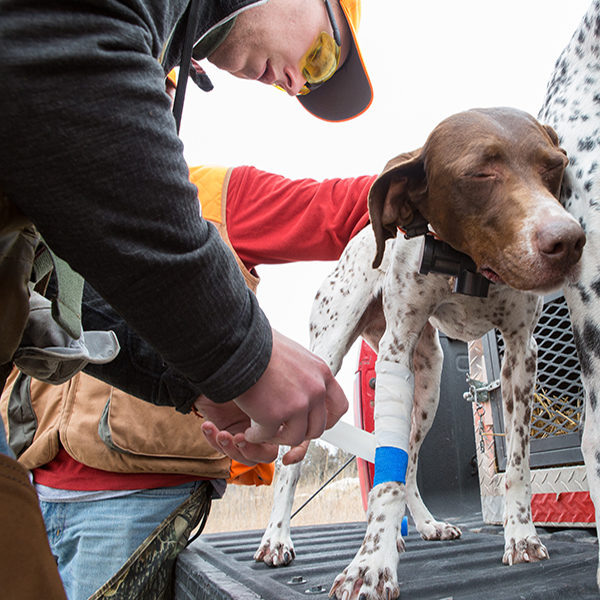
A good upland gun dog kit should have a bit of everything: basic medical supplies, extra parts, tools, extra shells, extra gloves, and anything vital you might find yourself needing on a bird hunt.
This preparation might save you hundreds of unnecessary dollars at a vet, or save your hunting trip when the unexpected occurs. Even if a hunt-ending event happens, there are things that can be done to make an injured gun dog more comfortable or assist the efforts to leave.
The first thing you need to acquire is a pack to keep in the truck. Segmented compartments are ideal for an upland gun dog kit. A typical gym duffel with one singular compartment will turn into a mess instantly. Organizational mesh packing cubes are great for optimizing space and ensuring you stay organized if your pack doesn’t have numerous zipped compartments.
There are plenty of medical kits and other pre-organized options, but I’ve yet to find one that covers all the needs. I’m picky.
I’ve gone through a combat lifesaver course in the Army and currently hold an EMT-B and IV certification. I geek out on the medical side. If something happens, I like to be the one with the solution. You should look at the type of dog, the gear being used, the terrain you’ll be hunting, and the conditions the hunts will occur to create your own personalized kit. Know the factors and elements your dog will face and you’ll most likely have the solution if anything arises. Barbed wire, loose shale with sharp edges, cacti, and burrs are all waiting in the fields.

The medical kit is an important place to start the build. A generalized selection typically includes gauze, rubbing alcohol, hydrogen peroxide, EMT gel, tweezers, extended foreceps, compression wrap, super glue, duct tape, and buffered aspirin. Other potentially important pieces include a thermometer, Pad Heal, irrigating syringe, microfiber towels, ice packs, Quikclot, hand and toe warmers, shears, and a staple gun. A thorough look at the elements in the field should tell you what is really necessary.
A small tool and gear kit is a welcomed addition to any upland gun dog kit as well. A Leatherman or Gerber multitool should have a home in the pack. Many gun dog owners, like myself, run e-collars with GPS capabilities. Batteries die, GPS collar antennas get chewed on, and guns jam. Know the tools you’ll need to take gear apart and put back together.
I also like to carry a selection of shells in my kit. A 3-inch shell with #4 shot has no place in my shotgun when I’m heading into strong quail habitat, just as a 2 3/4-inch shell with 7 1/2 loads isn’t useful for a South Dakota rooster trip. I like to have a few selections on hand. Swapping out is easy from different fields or hunts and you’ll have the right shell for the job.
The vast majority of my time is spent thinking about the pups, but it’s good to pack some things for yourself, too. My preference is to have a small bottle of ibuprofen for the CRP marches that give me flashbacks to basic training. It’s also a matter of when, not if, a blister will form. A pack of moleskin or a KT Tape Blister Treatment Patch are great options to keep stocked up on. Single serve energy packets will always have a home in my kit, as well. They are ideal for the post-lunch hikes or when you’re running on empty.
No kit is perfect, trust in that. Gun dogs will always find a way to surprise you with what they get into. A little effort with collecting a variety of these essentials will go a long way, though. Have fun, stay safe, and shoot straight.
Or, at least have a good excuse when you don’t.






